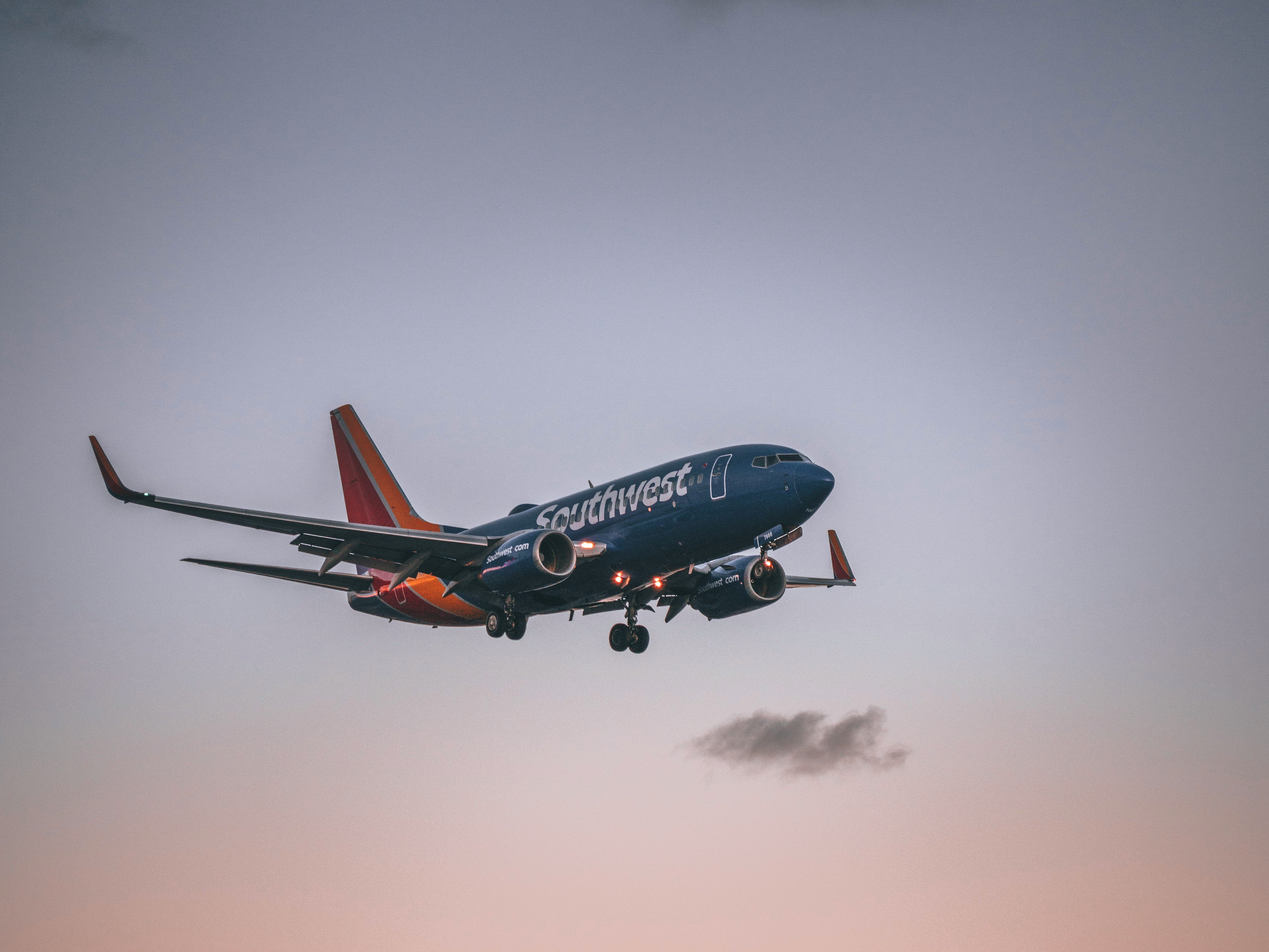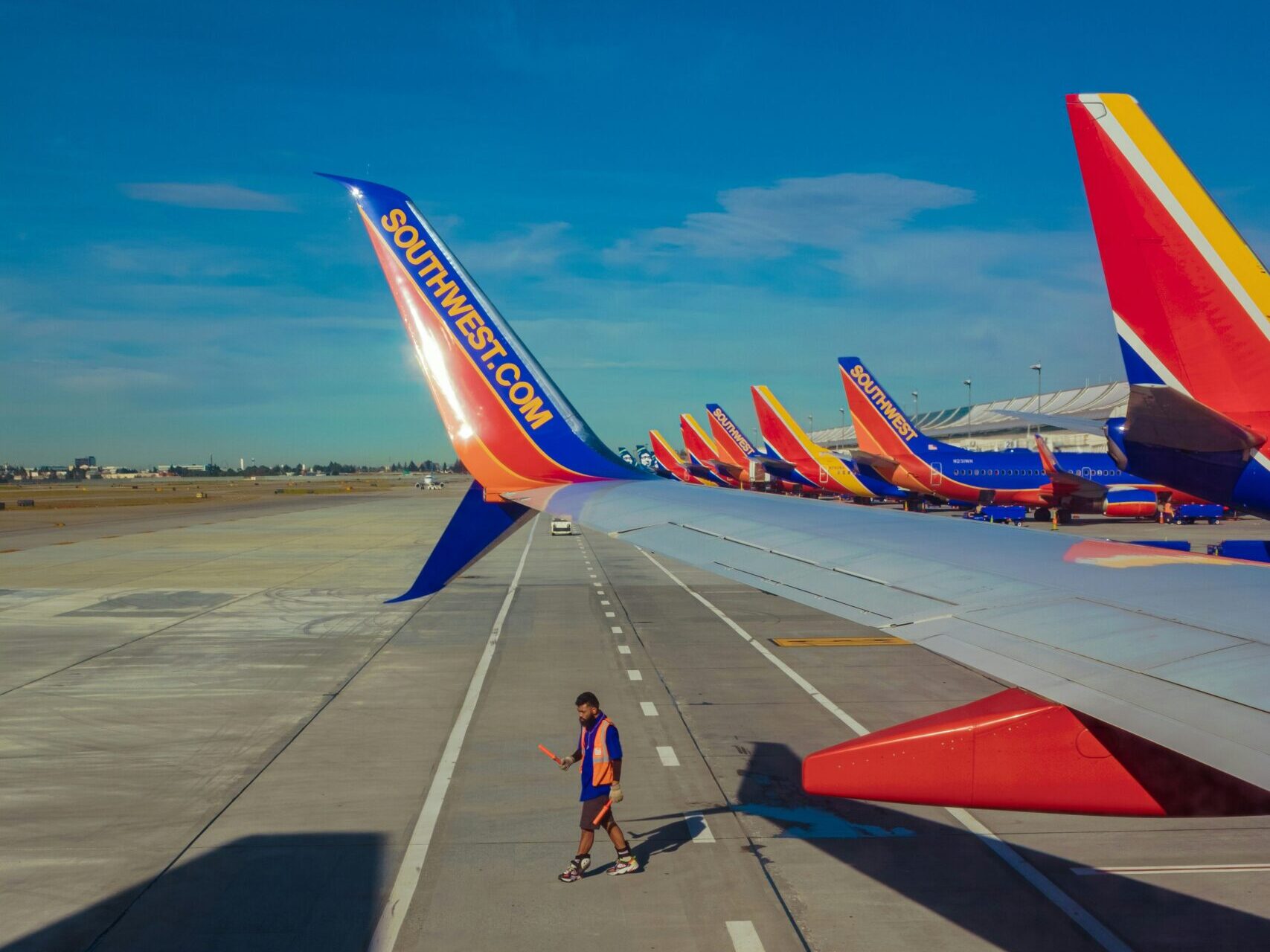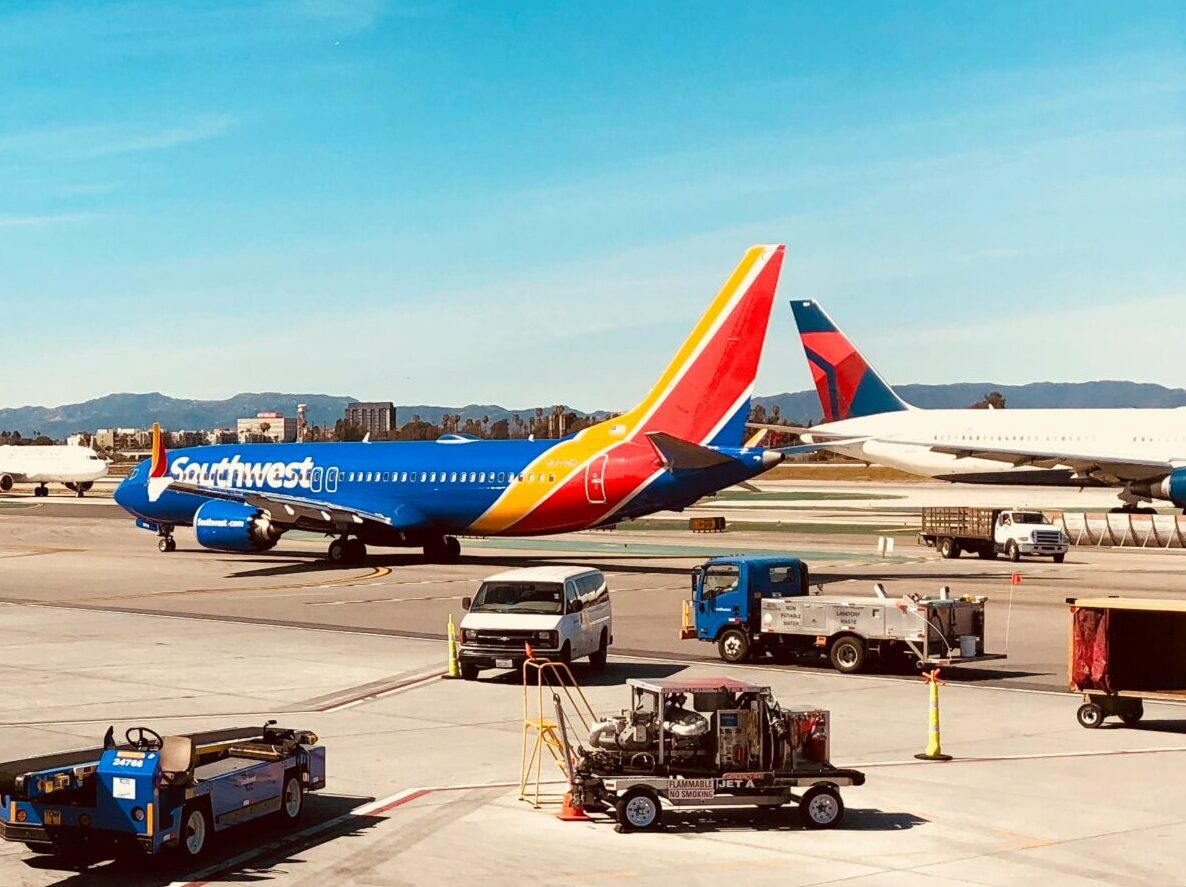Southwest Blames Economy—Not Baggage Changes—for Sharp Drop in Spring Profits
Facing low demand and strategic growing pains, the carrier reports a steep spring earnings drop—raising questions about its reinvention
by Lauren Smith
July 25, 2025

Photo: Southwest Airlines. Courtesy of Kyle Fritz / Unsplash
Southwest Airlines recorded a decline in profits and revenue this spring. The airline attributes this drop to economic uncertainty and low demand for domestic travel, rather than to the controversial changes in its business strategy.
The Texas-based airline, the largest domestic carrier in the U.S., reported a net income of $213 million for the second quarter of this year, marking a 42 percent decline from the spring of 2024.

Photo: Southwest Airlines. Courtesy of Oliver Engel / Unsplash
Additionally, its operating revenue decreased by 1.5 percent to $7.2 billion, which was below the analysts’ expectations of $7.29 billion.
Soft Demand, Not Strategy Shift
Southwest attributed the fall to lacklustre travel demand rather than the ongoing overhaul of its business model, which has seen the airline junk some of its long-standing, industry-unique policies, including free baggage.
Travel demand has been slow this year, particularly in the spring, as President Trump imposed, lifted, and then re-imposed tariffs on trade with much of the world. Like many competitors, Southwest withheld its full-year financial forecast in April, citing the economic uncertainty caused by the trade war.
That uneasiness has continued into the summer, typically the best season for airlines, particularly for standard economy seats.

Photo: Courtesy of Ivan Mercado / Unsplash
At the higher end of the market, well-heeled travelers are still jetting off on summer vacations. Delta and United have had their revenues boosted by bookings in increasingly luxurious premium cabins.
That’s a market Southwest wants to tap into. The airline will introduce assigned seating, including seats with extra legroom, early next year, and has teased other luxuries such as premium cabins and lounges.
But until then, Southwest largely serves budget-conscious travelers who are still watching their spending closely.
Fares Fall to Stimulate Bookings
To drum up business, low-cost carriers have had to slash fares. Southwest CEO Bob Jordan told CNBC that the industry has seen heavy discounting this summer.
Reflecting that discounting, Southwest said its unit revenue could range from 2 percent lower to 2 percent higher than last summer.

Photo: Bob Jordan, CEO at Southwest Airlines. Courtesy of Maria Nieto, Southwest Airlines, 2024
However, Southwest was sanguine, pointing out that domestic travel demand stabilized after a jittery March and April. “While early, recent industry demand shows signs of improvement off of depressed second quarter 2025 levels,” Southwest said.
The industry has taken efforts to limit seat supply by cutting domestic flights, and competitors, including United and Alaska, have reported stronger bookings recently.
Mixed Results from Fare Changes
Meanwhile, Southwest said that its earnings hadn’t been hit by the scrapping of its decades-long “two bags fly free” policy in late May. Instead, the policy has been a major money spinner, exceeding expectations, it said.
However, bookings did dip following the introduction of a non-refundable, basic economy fare. The stripped-back fare bundle replaced the Wanna Get Away fare, which came with privileges such as free changes.

Photo: Courtesy of Southwest Airlines
Southwest blamed the slump in bookings on its website and marketing. It stated that it “took swift action and refined its booking flow and marketing approach in an effort to reduce friction,” and saw bookings and conversions quickly rebound.
However, the wobble hit unit revenues by 1.5 points and is expected to depress third-quarter unit revenues by 1 point.
Southwest also published new projections for 2025, anticipating that its earnings before tax and interest (EBIT) will sit between $600 million and $800 million.




